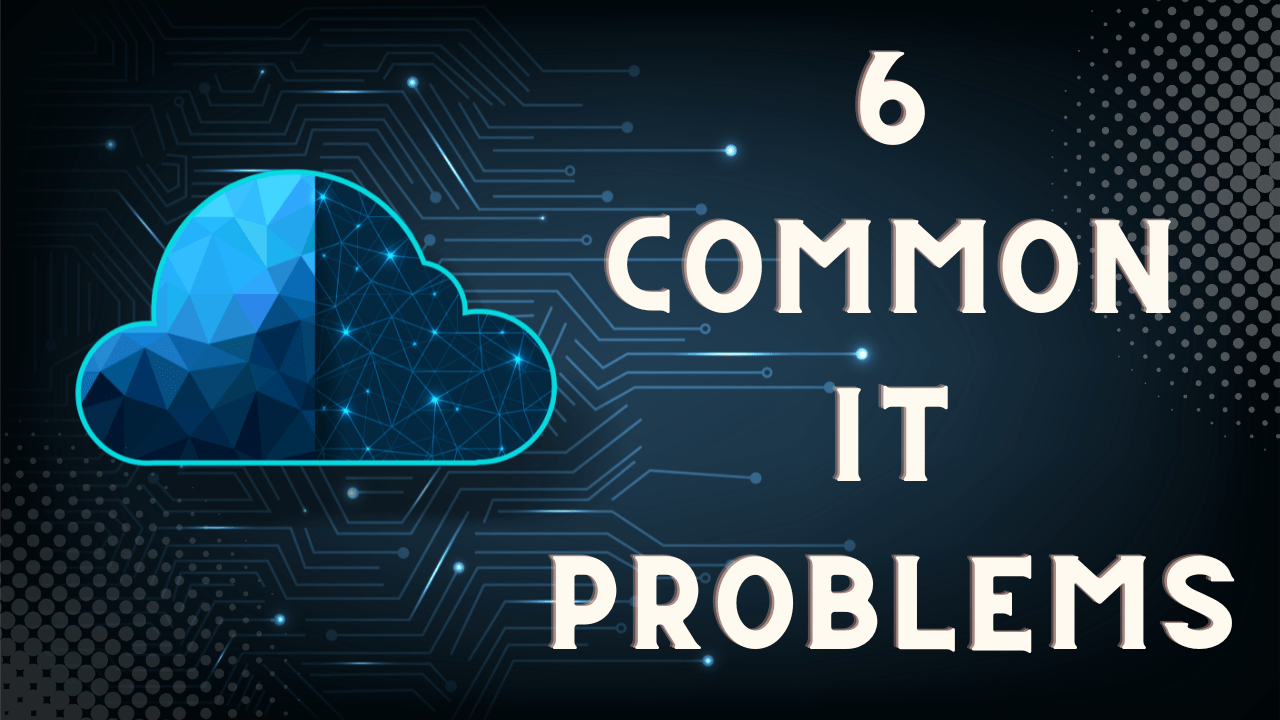6 Common IT Problems and Their Impact on Businesses
Key Points:
- The ever-changing landscape of technology leads to new IT problems every day.
- Businesses must be proactive to stay ahead of the curve regarding IT problems.
- Businesses can avoid major disruptions by being aware of the common issues and implementing the appropriate solutions.

Information Technology (IT) is a crucial part of any modern business. It helps organizations become more efficient and connect with customers, employees, and partners. However, IT can also be a source of frustration, as it is often complex and prone to problems. In any business, specific IT problems are bound to occur no matter how well-prepared you are. Whether a crashed server or an email outage, these issues can cause serious disruptions in your workflow. Today, we’ll discuss some of the most common IT problems all companies face and provide tips on addressing them.
1. Lack of IT Security
One of the most common IT problems is a lack of security. With so many cyber threats out there, it’s essential to have strong security measures in place to protect your data and systems. Unfortunately, many companies don’t invest enough in security, leaving themselves vulnerable to attacks.
Solution: Make sure you have a robust security system, including firewalls, anti-virus software, and intrusion detection. Train your employees on best security practices, and ensure they understand the importance of keeping your systems safe.
2. Downtime
Another common IT problem is downtime. This is when your systems or website is down for maintenance or due to an issue. Downtime can be costly for businesses, leading to lost productivity and revenue.
Solution: Have a plan in place for dealing with downtime. This should include having backup systems in place so that you can continue to work if your primary system goes down. Make sure your employees know what to do during downtime and have a way to stay in touch with customers or clients if your website is down.
3. Data Loss
Data loss is another common IT problem. This can happen due to hardware failure, human error, or malicious attacks. Data loss can devastate businesses, leading to lost information, customers, and revenue.
Solution: Invest in data backup and recovery solutions. These will help you protect your data and quickly recover it if lost. Make sure your employees understand the importance of backing up data and have a process in place for doing so.
4. Outdated Hardware and Software
Another common IT problem is outdated hardware and software. As technology evolves, it’s essential to keep your systems up-to-date. Otherwise, you’ll be at a competitive disadvantage, and your systems may become vulnerable to security threats.
Solution: Regularly update your hardware and software. This includes both your operating system and the applications you use. Stay up-to-date on the latest security threats, and make sure your systems are protected against them.
5. Slow System Performance
Slow system performance is another common IT issue. This can be caused by many factors, including outdated hardware, insufficient resources, or incorrect configurations. Slow performance can lead to lost productivity and frustration for users.
Solution: Invest in new hardware or upgrade your existing hardware as needed. Make sure your systems have enough resources, such as memory and storage, to meet the demands of your users. Also, check your configurations and make sure they are optimized for performance.
6. IT Support Issues
Another common issue that businesses face is IT support. Many companies don’t have enough staff to support their IT systems or staff that is not properly trained. This can lead to issues when things go wrong or when users need help.
Solution: Make sure you have enough staff to support your IT systems and that they are properly trained. Also, consider using a managed services provider (MSP) to help with your IT support needs. MSPs can provide expert support when needed, often more cost-effective than hiring your own staff.
What Impact Do These IT Problems Have on Businesses?
Every business relies on information technology (IT), whether communicating with customers or employees, processing transactions, or managing inventory. When IT systems go down at any time, it can cause serious disruptions to business operations. The impact of IT problems typically falls into one of three categories:
- Financial Impact
- Productivity Impact
- Reputational Impact
Let’s take a closer look at each of these categories:
1. Financial Impact
The financial impact of IT problems can be significant. Even a relatively minor issue can cost a business thousands of dollars in lost productivity, data loss, and revenue. In some cases, IT problems can even lead to business failure.
2. Productivity Impact
IT problems can have a serious impact on productivity. Even a minor issue can result in lost productivity, as employees cannot work effectively. Sometimes, IT problems can even lead to shutdowns, as businesses cannot operate without IT systems.
3. Reputational Impact
IT problems can also damage a business’s reputation. If a business experiences a major IT outage, customers may lose faith in the company and take their business elsewhere. In some cases, media coverage of IT problems can damage a business’s reputation.
IT problems don’t just impact one area of a business. They can have a ripple effect that impacts many different areas. This is why it’s crucial to have a plan to deal with IT problems.
Final Thoughts
No business is immune to the potential downside of technology. IT problems can have a significant financial, productivity, and reputational impact on businesses of all sizes. The best way to avoid these problems is to invest in a reliable IT infrastructure and to have a comprehensive plan for dealing with IT issues. By being prepared, businesses can minimize the impact of IT problems and keep their operations running smoothly.






